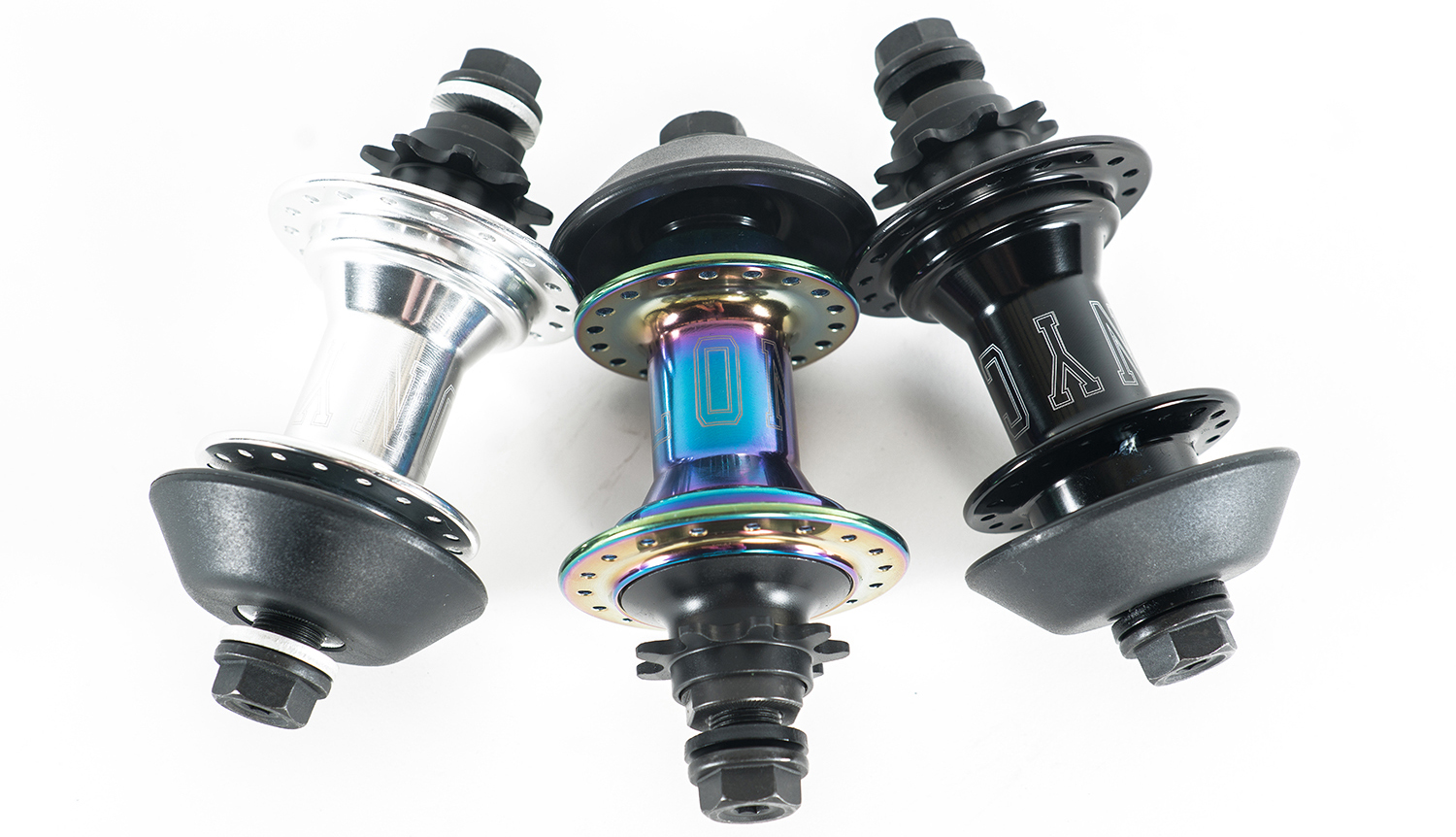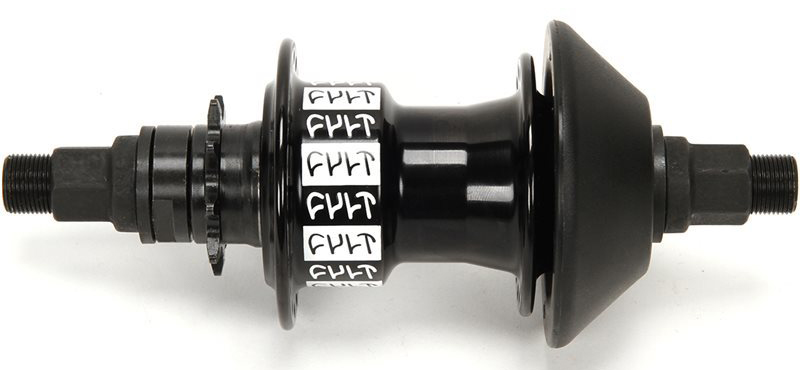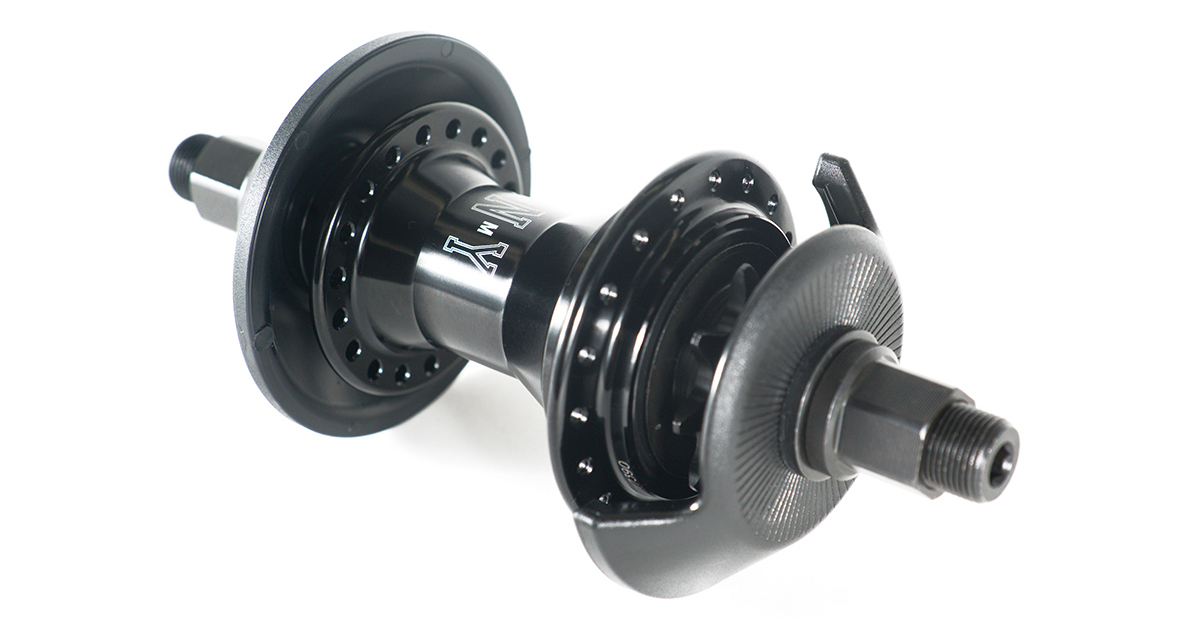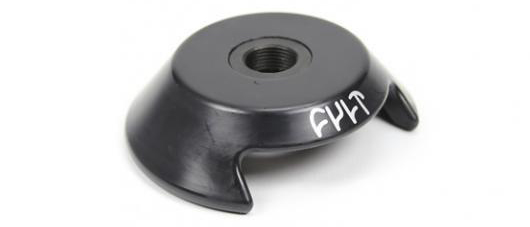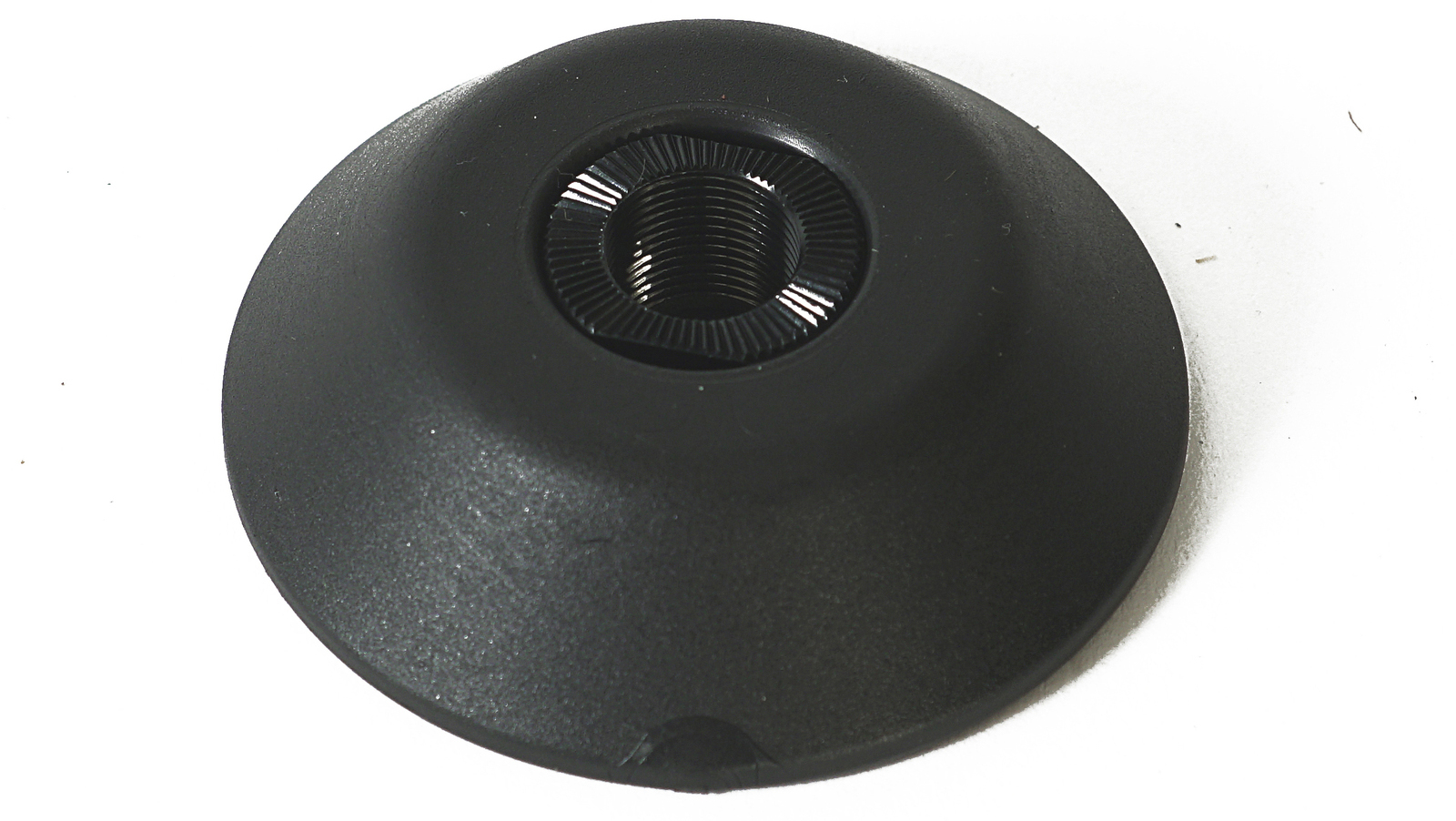UNDERSTANDING BMX HUBS
Author: Cooper Date Posted:10 February 2023
If you’re in the market for buying a new BMX hub it can be a little confusing on what hub will suit your riding these days. There are regular cassette hubs, freecoaster hubs and now you have hubs that are a free coaster but work like a cassette!
So let’s breakdown the options so that hopefully it helps you make the right hub choice.
CASSETTE HUBS
The classic BMX hub in this day and age, the cassette hub is the most universal hub out there and generally what you will find on complete BMX bikes. The cassette hub such as the Colony Wasp is favourable with riders that generally ride transition or trails because of the direct engagement of the hub, I would say this type of BMX hub is the most reliable type of hub.
What is a Cassette BMX hub? When you pedal forward the drivetrain engages instantly however when you are rolling backwars (fakie) the drivetrain also engages so you need to back pedal as you go backwards.
Cassette style hubs also have more options for upgrades such as Alloy drivers and Alloy axles for riders looking to shave some weight off of their bikes.
FREECOASTER HUBS
The Freecoaster hub will usually be found within the street riding scene as a lot of guys will go fakie before, after or during certain tricks. I feel like free coaster hubs became very popular because of the amount of new tricks it opened up with the help of being able to roll backwards without needing to back pedal.
What is a Freecoaster BMX hub? A traditional free coaster hub such as the Cult CREW freecoaster will have "slack" when you pedal forward. The amount of slack will determine how much gap you have before engagement moving forwards or backwards. Most of these types of hubs will have adjustable slack so you can fine tune to your own riding style, some riders love having a lot of slack if they do a lot of fakie moves because it makes it almost impossible for the hub to engage so you can trust it won't give you any trouble whilst doing fakie moves. The downside to this is that you will have more slack pedalling forward before the hub engages which is why you will find this sort of setup within the street riding community who ride a lot of flat ledges as they're not needing to pedal fast or quick very often.
PLANETARY BMX HUBS
Then you have the newly design planetary free coaster style hub where you sort of get the best of both worlds as the hub has direct engagement but also acts as a freecoaster when you're rolling backawards. The Colony Swarm hub does just that and has been the choice of many team riders currently.
This video explains how exactly a planetary style hub works:
Shop all types of BMX hubs available here.
CHOOSING THE RIGHT BMX HUB GUARDS
You want to protect your new BMX hub so the best way to do that (besides keeping your spokes tight!) is to run hub guards, especially if you are planning to run pegs on your bike. These days you will find most hubs will come supplied with at least one hub guard, usually the non drive side becuase that's primarily your preferred grind side.
Not all hub guards are the same and that's something to be aware of before buying any extra guards.
NYLON OR ALLOY HUB GUARDS?
In my opinion Nylon (plastic) guards are the best, for two reasons.... Your pegs are probably made of the same material so they will work together cohesively and they also grind smoother. Some riders, generally transition riders prefer to run Alloy or CrMo pegs (for better grip on stall tricks) so you may find an Alloy guard such as the Wasp NDS guard might suit you better in circumstances like these.
DRIVE SIDE VS NON DRIVE SIDE
Drive side hub guards not only protect the hub and spokes but also your chain so it's crucial to be running one if you plan to grind on this side of your bike. When looking for a drive side guard to will pretty much only find Nylon options, it's more about choosing the correct one to suit your specific hub. In terms of quality they're all pretty much the same.
Non drive side guards as I mentioned earlier generally come standard with a hub these days but if your hub doesn't then make sure you get one fitted up as it will make a great difference not only in protectioon of your hub but also the quality of grinding as you will find all grinds to be a lot smoother and quicker.
Click here to shop all BMX Hub Guards.
WEIGHT CAN BE SOMETHING TO TAKE INTO ACCOUNT
If you're weight conscious with your bike then this is something else to take into account as Freecoasters are generally heavier than a regular cassette hub, here's some examples for you...
Colony Wasp Cassette Hub: 415 grams.
Cult CREW Freecoaster: 742 grams.
Colony Swarm FC Hub: 512 grams.
RIGHT HAND DRIVE VS LEFT HAND DRIVE BMX HUBS
Last but not least is the consideration you should give as to what drive side drive hub you should be running. Traditionally, all bikes are RHD (Right Hand Drive) but you can also get hubs in LHD (Left Hand Drive). Typically what you should choose, would be down to your natural side of the bike that you grind with. This will keep your sprocket, chain & rear driver out of harm's way more. So if you grind right side, you may want to consider a LHD drive train set up. If you grind on the left side then a standard RHD set up will be for you. One thing to be mindful of is that your cranks are LHD compatible when looking to switch.
If you have any questions about these topics feel free to reach out to us.


